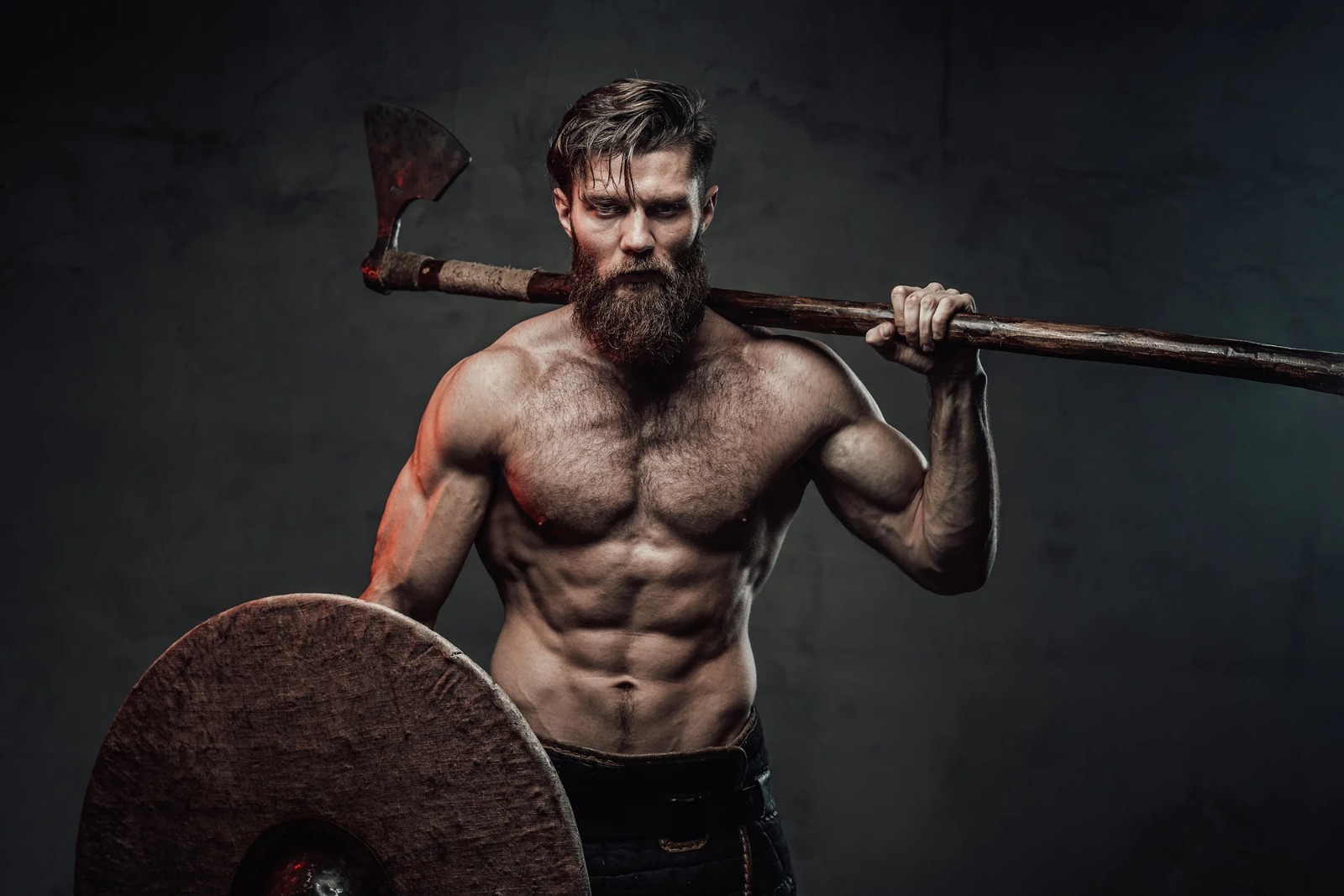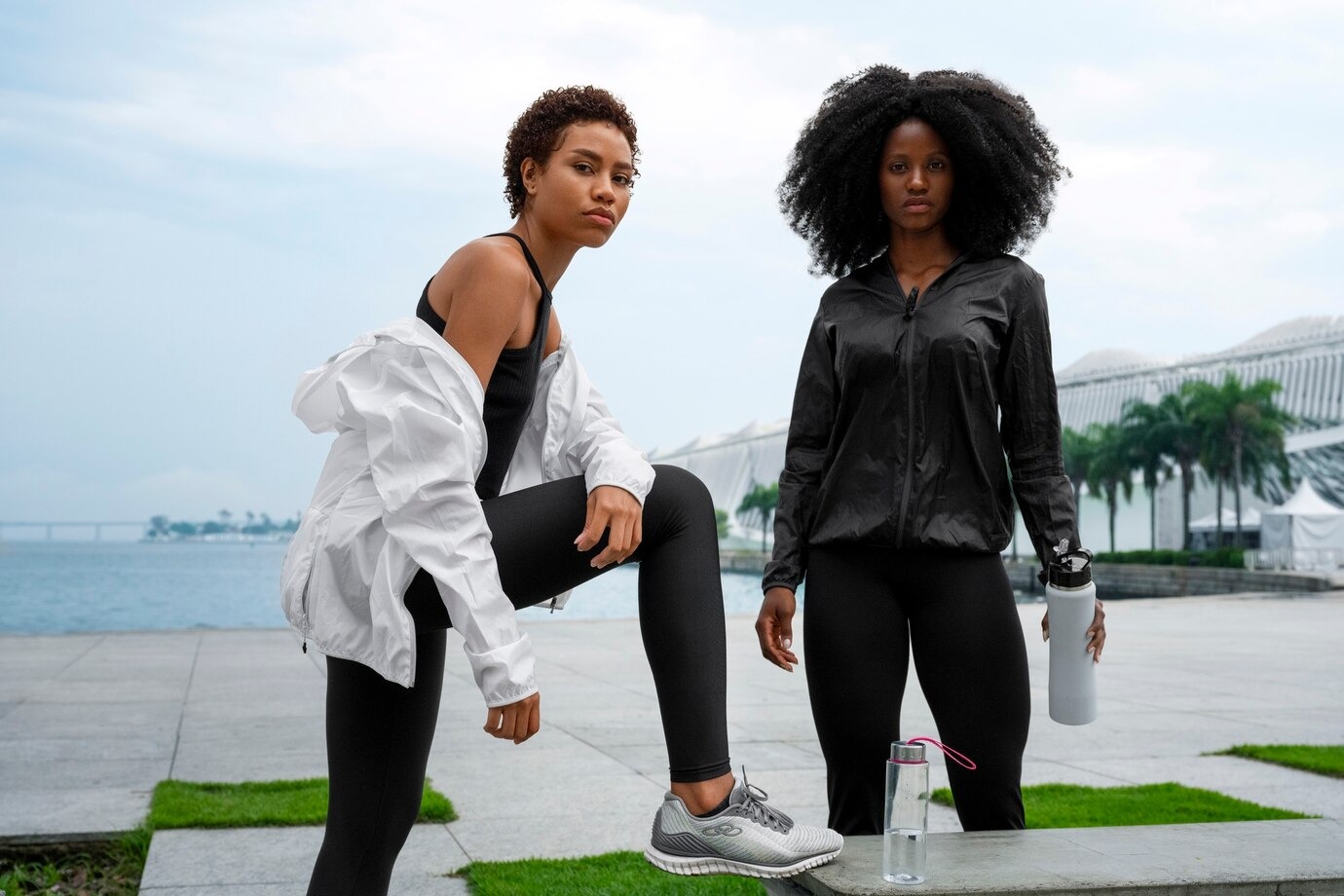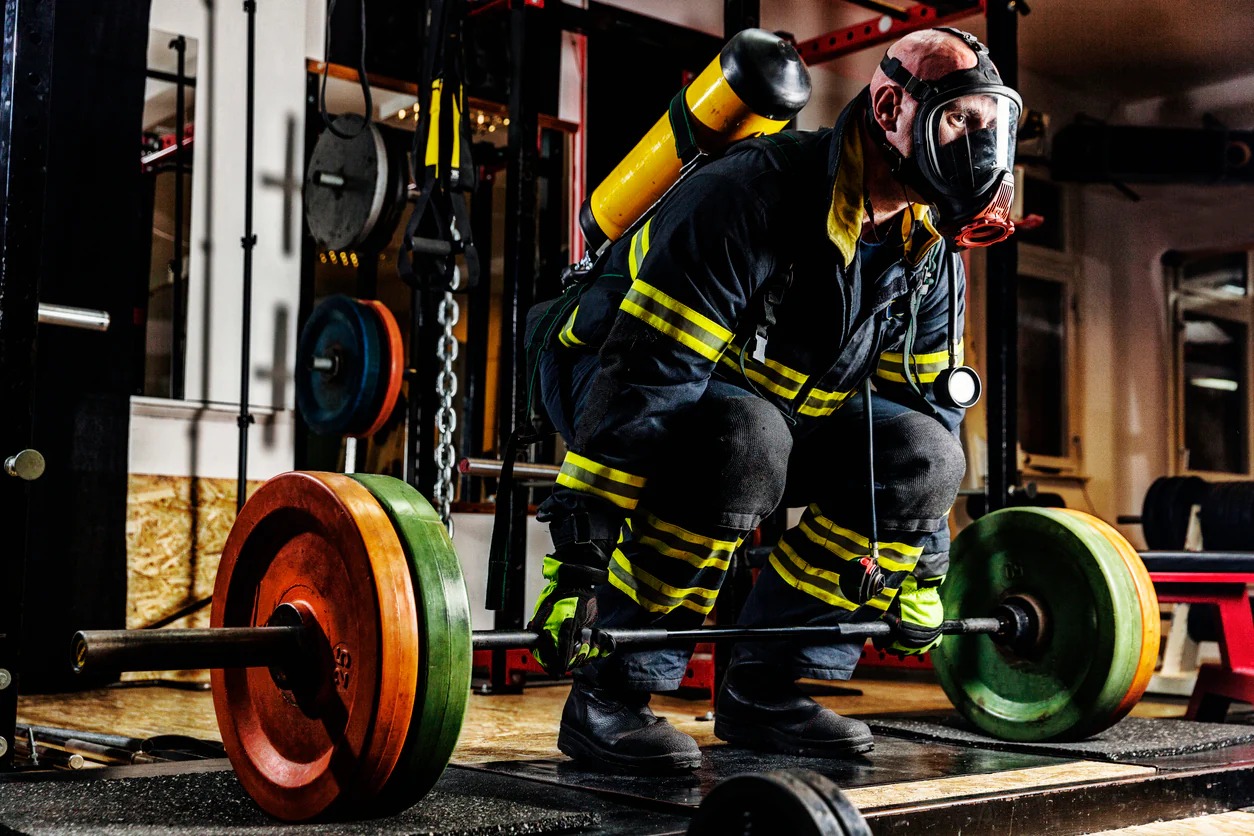
Viking Fitness: Old Norse Training Methods for Modern Athletes.
Discover the ancient training secrets of the Vikings, whose demanding lifestyle forged unmatched strength, endurance, and mental resilience. From rowing longships and lifting heavy stones to wrestling, combat drills, and surviving harsh Nordic climates, learn how Old Norse fitness methods can inspire modern athletes to build functional strength, agility, and endurance while cultivating mental toughness and holistic well-being.
💪 Fitness Guru
46 min read · 8, Oct 2025

Introduction: The Strength of the Northmen
When we think of Vikings, images of towering warriors with axes and shields come to mind—fearless men who rowed for days, fought in freezing rain, and braved the unknown seas. These Norsemen were not only skilled sailors and fierce fighters but also among the fittest people of their time. Their physical conditioning was forged in a world of harsh climates, demanding labor, and endless warfare. Today, modern athletes and fitness enthusiasts are rediscovering the power of Viking fitness—a combination of strength, endurance, agility, and resilience developed through natural, functional movement rather than machines or structured gyms.
This article explores the Old Norse approach to fitness, their daily physical routines, warrior conditioning, and how modern athletes can adapt Viking-style training to enhance both body and mind.
1. The Viking Lifestyle: Fitness as a Way of Life
The Vikings did not exercise for aesthetics or leisure—they trained to survive. Physical strength was essential in nearly every aspect of their existence. Their daily lives included rowing longships across treacherous seas, farming, hunting, woodcutting, and combat.
- Rowing and Sailing: Viking raids and explorations demanded enormous stamina. Crews of 30–60 men rowed massive ships weighing several tons across the North Atlantic. Each man had to maintain power and rhythm for hours, sometimes days, through waves and storms. This built unmatched endurance and upper body strength.
- Farming and Manual Labor: Off the battlefield, Vikings were farmers, blacksmiths, and craftsmen. Tasks like plowing, chopping wood, lifting stones, and carrying hay bales were functional exercises equivalent to modern-day compound lifts like squats and deadlifts.
- Combat and Training: Physical training for battle was constant. Swordplay, wrestling, archery, and shield drills improved strength, reflexes, and coordination. Warriors also practiced Glíma—a traditional form of Norse wrestling still practiced in Iceland today.
In essence, Vikings stayed fit not through planned workouts but through a lifestyle of consistent, intense physical demands.
2. The Principles of Viking Fitness
To understand Viking fitness, it’s essential to recognize the core principles that guided their strength and conditioning:
- Functional Strength Over Muscle Size:
- Viking warriors weren’t bodybuilders—they prioritized strength useful in real-life situations. Lifting logs, rowing oars, or carrying heavy shields demanded full-body coordination.
- Endurance and Stamina:
- Vikings often fought for hours or rowed across oceans. Their training favored long-lasting energy and muscle endurance, similar to modern endurance athletes.
- Adaptability to Environment:
- Vikings trained in harsh climates—snow, rain, wind, and cold. This developed not only physical resilience but also mental toughness.
- Natural Movement:
- Their training was primitive yet effective. They climbed, lifted, pulled, swam, and ran—all functional movements that built agility and balance.
- Mind-Body Connection:
- Norse culture celebrated mental toughness, courage, and willpower. A Viking’s fitness was incomplete without discipline, fearlessness, and the belief in personal strength.
3. Old Norse Training Methods
Let’s explore some of the physical activities that built Viking strength and endurance:
a. Stone Lifting (Húsafell and Dritvík Stones)
Vikings tested their strength by lifting massive stones, often weighing over 100 kg. The Húsafell Stone—still famous in Iceland—was used to determine a man’s worth. If he could lift it to his waist, he was fit to work on the farm. Modern strongman competitions still use replicas of these stones.
Modern Adaptation:
Athletes can use sandbags, medicine balls, or stones to simulate this ancient exercise. The focus is on grip strength, core stability, and full-body power.
b. Glíma – The Viking Wrestling
Glíma was more than just sport—it was part of warrior culture. This standing grappling technique involved balance, agility, and leverage rather than brute force. Warriors used it to prepare for the chaos of close combat.
Modern Adaptation:
Practicing wrestling, judo, or functional combat training develops similar balance, coordination, and agility.
c. Axe Throwing and Combat Drills
Training with weapons like swords, axes, and shields required incredible coordination, precision, and upper body strength. Daily weapon drills helped warriors develop reflexes and muscular control.
Modern Adaptation:
Functional training with weighted clubs, battle ropes, or even axe throwing sports can replicate the explosive power and coordination required in Viking combat.
d. Running and Terrain Training
Vikings traversed rugged landscapes—mountains, forests, icy fields—often on foot. Running uphill, leaping over obstacles, and climbing were natural parts of their training.
Modern Adaptation:
Trail running, sprint intervals, and outdoor obstacle courses (like Spartan races) capture the spirit of Viking terrain training.
e. Cold Endurance Training
Living in freezing Nordic conditions, Vikings developed strong resilience to the cold. Swimming in icy waters or fighting in snow required not only physical toughness but also extraordinary control over breathing and circulation.
Modern Adaptation:
Cold exposure, such as ice baths or winter swims, is now known to improve circulation, metabolism, and immune function—similar to modern Wim Hof techniques.
4. Viking Nutrition and Recovery
Physical prowess required fuel, and Viking diets were simple but powerful. They consumed high-protein, nutrient-dense foods suited for strength and endurance.
- Primary Foods:
- Fish, meat (pork, lamb, beef), dairy, eggs, root vegetables, and grains like barley.
- Natural Supplements:
- Fermented foods, berries, honey, and seaweed for vitamins and minerals.
- Hydration:
- Water, ale, and fermented milk were common. Alcoholic drinks like mead were reserved for celebrations, not daily hydration.
- Recovery Practices:
- After long voyages or battles, Vikings often used sauna-like steam baths and massage for recovery—a precursor to modern sports therapy.
Modern Adaptation:
Athletes can follow similar nutritional principles—whole foods, lean protein, healthy fats, and hydration—to build sustainable energy and muscle recovery.
5. The Mental Strength of Vikings
Viking fitness wasn’t purely physical—it was a manifestation of mental endurance. Norse mythology glorified courage, resilience, and fate (wyrd). To them, fearlessness in the face of death was the ultimate expression of strength.
This mindset cultivated a kind of psychological fitness:
- Embracing discomfort as part of growth.
- Training discipline as a daily ritual, not a choice.
- Facing adversity with calm and determination.
Modern athletes can learn from this mindset—channeling discipline and mental focus to push through fatigue, failure, or fear.
6. Modern Viking-Inspired Workouts
Fitness experts today have designed Viking-style training programs that incorporate functional movement, endurance, and strength:
Sample Viking-Inspired Workout
- Warm-up (10 mins): Dynamic stretches, bodyweight squats, and push-ups.
- Functional Strength Circuit (3 rounds):
- Stone/sandbag lifts (5 reps)
- Tire flips or sled pushes (40 m)
- Pull-ups (to mimic climbing ship ropes) (10 reps)
- Log carries or farmer’s walks (30 m)
- Endurance Challenge:
- Rowing machine (1000 m) or hill sprints
- Battle rope slams (3 sets of 30 seconds)
- Agility & Combat Movement:
- Medicine ball throws
- Wrestling/grappling drills or shadow combat
- Cold Exposure (optional):
- Finish with a cold shower or ice dip to simulate Norse cold adaptation.
This blend of power, endurance, and resilience embodies the Viking philosophy—train as you live, live as you fight.
7. The Viking Legacy in Modern Fitness Culture
Today, Viking-inspired fitness has become a global trend. From Viking obstacle races in Scandinavia to Strongman competitions and functional training, athletes worldwide are rediscovering these ancient principles.
- CrossFit integrates functional movement and endurance, much like Viking labor.
- Strongman training mirrors stone lifting and log carries.
- Cold therapy and breath control (popularized by modern athletes like Wim Hof) echo Viking cold-endurance traditions.
The appeal lies not just in physical transformation but in reconnecting with primal strength—the ability to move naturally, adapt to any challenge, and develop unbreakable willpower.
Viking fitness, deeply rooted in the lifestyle of the Old Norse people, represents a fascinating and holistic approach to strength, endurance, and resilience that modern athletes can learn from, as the Vikings were not merely warriors, but practical athletes whose daily existence required extraordinary physical capabilities, from rowing longships across tumultuous North Atlantic seas to hacking wood, lifting heavy stones, plowing fields, and engaging in combat training that was as much about survival as it was about skill, and this constant exposure to physically demanding tasks cultivated functional strength that modern gym machines rarely replicate, with their lives demanding a balance of upper body power, core stability, and leg endurance through repetitive but highly practical motions, and their combat preparedness was enhanced through Glíma, the traditional Norse wrestling technique that emphasized balance, leverage, agility, and reflexive strength, fostering coordination and the ability to manipulate an opponent’s momentum, which in modern terms translates to agility drills, wrestling, and mobility exercises that improve neuromuscular control and athletic performance, further, Viking warriors trained with real weapons, lifting axes, swords, and shields to build explosive power, grip strength, and precision, often repeating drills that simulated actual combat, an approach modern functional training mimics through battle ropes, medicine ball slams, weighted club movements, and kettlebell exercises, while their environment served as a natural gym, where terrain running, hill climbs, swimming in icy waters, and carrying heavy loads were standard, developing cardiovascular endurance, muscular stamina, and mental toughness simultaneously, and this exposure to the elements, from freezing temperatures to stormy seas, enhanced not only physical resilience but also psychological fortitude, instilling a capacity to endure discomfort, regulate breathing, and maintain performance under stress, which modern athletes can emulate through controlled cold exposure, high-intensity interval training in variable outdoor conditions, and obstacle-based functional workouts, in addition, Vikings’ diet, consisting of nutrient-dense whole foods such as fatty fish rich in omega-3s, red meat for protein, eggs, root vegetables, grains like barley, and fermented dairy products, complemented their physically demanding lifestyle by providing the necessary fuel for muscle repair, energy production, and sustained endurance, and this holistic integration of nutrition, movement, and mental discipline reflects a timeless principle for modern training: that strength and fitness are not isolated to gym routines but are outcomes of consistent, purposeful living that challenges both body and mind, while also incorporating principles of recovery, as historical evidence suggests that Norsemen utilized practices like steam bathing, massage, and rest cycles to recuperate from physical exertion, illustrating an early understanding of balance between stress and recovery, a concept widely supported in modern sports science, moreover, their social and cultural values reinforced fitness as an essential virtue, as physical capability was intertwined with survival, honor, and reputation, motivating constant practice and improvement, and for today’s athletes, adopting Viking-inspired fitness routines can involve stone or sandbag lifting to simulate the Húsafell stones, rowing or paddle workouts to emulate longship crewing, dynamic wrestling and grappling drills to enhance functional strength and coordination, uphill sprints and trail running for cardiovascular endurance, and exposure to cold environments to cultivate resilience, all combined with a nutrient-rich diet, adequate rest, and a mental framework that embraces challenge and adversity, ultimately demonstrating that Viking fitness is not merely about muscular development or aesthetic appeal, but about cultivating a balanced, versatile, and resilient body capable of enduring varied stresses, a high level of functional strength, and a disciplined mind, which modern athletes can adapt to enhance performance, recover faster, prevent injury, and maintain long-term health, and this approach also encourages reconnecting with natural movements and environments, challenging oneself through real-world functional tasks rather than machine-based isolation exercises, fostering a sense of adventure and primal engagement with fitness, emphasizing that fitness, when integrated into one’s lifestyle rather than treated as an isolated activity, produces results that are not only measurable in physical terms but also in mental toughness, confidence, adaptability, and overall well-being, making Viking fitness a timeless and comprehensive paradigm for training that modern athletes can adopt to transform both their bodies and their minds through a combination of historical insight, practical application, and disciplined lifestyle habits.
Viking fitness, rooted in the demanding lifestyle of the Old Norse people, represents a form of functional strength and endurance that modern athletes can draw inspiration from, as the Vikings were not merely warriors, but individuals whose daily existence required immense physical and mental resilience, and unlike contemporary athletes who often train in controlled environments, Vikings developed their fitness through a combination of labor-intensive work, survival skills, and constant exposure to the natural elements, with their daily routines including rowing longships across stormy seas, hauling heavy cargo, chopping wood, plowing fields, hunting, and carrying materials for construction or fortification, which in turn built full-body strength, cardiovascular endurance, grip power, core stability, and muscular coordination, and their training for combat was integrated seamlessly into their lifestyle, as they practiced with weapons such as axes, swords, and shields, not as isolated exercises but as tools for real-world combat scenarios, where strength had to be paired with agility, timing, and precision, and to further enhance their readiness for battle, Vikings engaged in Glíma, the traditional Norse wrestling style, which emphasized balance, leverage, quick reflexes, and the ability to manipulate an opponent’s momentum, teaching the body to respond instinctively under pressure, while also developing joint stability, functional flexibility, and core engagement, all of which are highly valued in modern functional fitness and athletic performance, moreover, their environment acted as a natural gym, as the harsh Nordic terrain forced them to traverse mountains, forests, icy rivers, and open fields, running uphill, climbing, jumping, swimming, and carrying heavy loads over long distances, and this constant exposure to challenging terrain built not only cardiovascular capacity and muscular endurance but also proprioception, spatial awareness, and the ability to maintain balance and coordination under unpredictable conditions, which today can be emulated through trail running, obstacle courses, hill sprints, weighted carries, and natural movement exercises, and in addition to physical exertion, Viking culture placed a significant emphasis on mental toughness, courage, and resilience, as facing extreme weather, prolonged voyages, the threat of battle, and high-stakes raids required a disciplined mindset that treated discomfort and adversity as catalysts for growth, cultivating a form of psychological fitness that modern sports psychology recognizes as essential for peak performance, while nutrition supported their demanding lifestyle, with diets rich in protein from meat, fish, and eggs, healthy fats, complex carbohydrates from grains and root vegetables, and essential micronutrients from berries, seaweed, and fermented foods, providing the fuel needed for muscle repair, energy, stamina, and recovery, and Vikings also intuitively understood the importance of rest and recovery, employing techniques such as steam baths, massage, and periods of rest after intense labor or combat, reflecting a holistic understanding of the balance between stress and recuperation, principles that are echoed in contemporary training methodologies, and modern athletes can adapt these Viking-inspired practices by incorporating functional strength exercises like stone or sandbag lifting to simulate the Húsafell stones, battle rope and kettlebell workouts to mimic weapon drills, rowing for cardiovascular endurance, uphill sprints for leg power, cold exposure to develop resilience, and wrestling or grappling drills to enhance balance and coordination, combined with a nutrient-rich diet, adequate sleep, and mental training to cultivate discipline and fearlessness, and the overarching philosophy of Viking fitness emphasizes purposeful movement, endurance under stress, adaptability, and the integration of strength, stamina, agility, and mental toughness, rather than focusing on isolated muscle growth or aesthetic appearance, which makes it a holistic approach to athleticism that transcends time, teaching that true fitness emerges not from machines or preplanned routines alone but from a life of movement, challenge, and resilience, and for modern athletes, embracing this Viking model not only improves functional physical performance but also fosters mental fortitude, confidence, and the ability to perform under pressure, while reconnecting them with primal forms of movement, natural environments, and the fundamental principles of human strength and endurance, demonstrating that Viking fitness is a timeless paradigm that combines physical rigor, mental toughness, practical skill, and lifestyle discipline, offering lessons that are highly applicable for anyone seeking comprehensive, adaptable, and real-world athletic capability.
Conclusion
The Vikings were not gym-trained athletes but natural-born warriors forged by their environment. Their fitness came from living functionally—lifting, rowing, running, and enduring. Modern athletes can gain much from adopting the Old Norse approach:
- Train with purpose, not vanity.
- Build strength useful for real life.
- Develop endurance through natural movement.
- Train the mind as much as the body.
- Embrace the elements and challenges.
By blending modern science with ancient wisdom, Viking fitness stands as a timeless guide to holistic athleticism—one that builds not just muscles, but resilience, courage, and a warrior’s spirit.
Q&A Section
Q1: What made Viking warriors physically strong?
Ans: Their daily lives involved rowing, farming, lifting, and combat—all functional activities that built real-world strength and endurance. They trained through natural movement and constant physical labor, not structured exercise.
Q2: What is Glíma, and how was it used in Viking training?
Ans: Glíma is a traditional Norse wrestling style focusing on balance, agility, and leverage. It prepared warriors for close combat and improved coordination and reflexes.
Q3: Can modern athletes benefit from Viking-style workouts?
Ans: Yes. Functional, endurance-based Viking workouts improve real-world strength, stamina, and mental toughness—benefits crucial for all modern athletes.
Q4: What did Vikings eat to maintain their strength?
Ans: Their diet included meat, fish, dairy, root vegetables, and grains. These nutrient-rich, whole foods supported muscle repair, energy, and endurance.
Q5: Why was mental toughness important to Viking fitness?
Ans: Vikings believed in courage and endurance. Their mental resilience helped them face extreme weather, long voyages, and battle stress—an essential part of true fitness.
Similar Articles
Find more relatable content in similar Articles

Viking Fitness: Old Norse Training Methods for Modern Athlet..
Discover the ancient training .. Read More

How Nutrition Impacts Hair and Nail Health..
Healthy hair and nails reflec.. Read More

Fitness Meets Fashion – Wearable Gear That Looks Like Street..
Wearable gear is transforming .. Read More

Firefighter Fitness – Training to Carry 50 Kg of Gear...
Firefighter fitness is a speci.. Read More
© 2024 Copyrights by rFitness. All Rights Reserved.